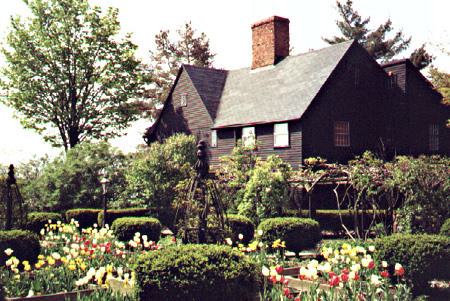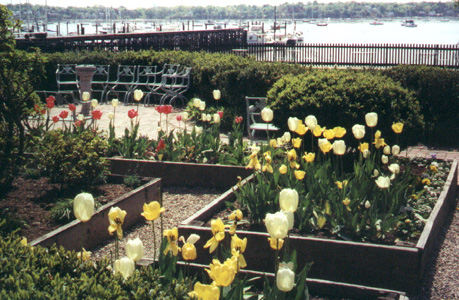 Tulip
Mania
Tulip
Mania Tulip
Mania
Tulip
Mania
17th Century wealth and speculation in the Netherlands.
"Let those who have abundance remember that they are surrounded with thorns, and let them take great care not to be pricked by them."
John Calvin
Commentary on Genesis
Speculation's role in markets
In the year 1635 everything seemed to be coming up tulips!
technical features | speculative bubble's phases | excesss | valuation
"The most spectacular, and certainly the most alarming
of these speculative breakouts, was the great tulip mania of 1636-37. It has
been the subject of much astonished and bemused writing, perhaps because of
the apparent incongruousness between the banality of the flower and the extravagance
of its treatment. Only  a
deeply bourgeois culture, it is implied, could possibly have selected the humble
tulip --rather than say emeralds or Arabian stallions-- as a speculative trophy.
But there was nothing suburban about tulips in the 17th century. They were,
at least to begin with, exotic, alluring and even dangerous.
a
deeply bourgeois culture, it is implied, could possibly have selected the humble
tulip --rather than say emeralds or Arabian stallions-- as a speculative trophy.
But there was nothing suburban about tulips in the 17th century. They were,
at least to begin with, exotic, alluring and even dangerous.
It was precisely at the point that their rarity seemed capable of domestication for a mass market that the potential for runaway demand could be realized.
It was this transformation from a connoisseur's specimen to a generally accessible commodity that made the mania possible. And there were other properties, inherent to the bulb, that distorted the process by which an exotic object entered the commonplace life of the culture. The key was reproducibility. Ming porcelain and Turkish rugs were also part of this enrichment of consumer supply, by which expensive rarities were adapted, through domestic manufacture, for a general market.
pp. 350-351.
technical features | speculative bubble's phases | excesss | valuation
 "The
tulip, though, was a different matter. It, too, was an imported luxury, originating
in Turkey (Ottoman Empire), but it could be literally transplanted with ease,
and reproduced horticulturally ad infinitum through the splitting of outgrowths.
(several shoots from the same bulbs, as in onions or garlic, produce clones)
"The
tulip, though, was a different matter. It, too, was an imported luxury, originating
in Turkey (Ottoman Empire), but it could be literally transplanted with ease,
and reproduced horticulturally ad infinitum through the splitting of outgrowths.
(several shoots from the same bulbs, as in onions or garlic, produce clones)
"Unlike other 'decorative' goods, then, there was a continuous chain connecting the most prized blooms at the top of the market, with the most modest reds and yellows, like Gouda, that became the stock of the mass trade. The tulip simultaneously maintained its associations of of precious treasure yet was a prize in some form within the reach of the common man. For a modest outlay he could be drawn into the nexus of buying and speculating which, like all gambles, became quickly addictive."
p. 351.
"There was one further aspect to the production of bulbs that made them ideal objects of speculation. This was their dependence on the passing seasons."
For genuine amateurs, the buying season was confined to the period between lifting (harvest) in June, and the next planting in October. It would have made no sense at all to have bought for delivery some months away. However, once growers were tempted into satisfying increasing demand by selling outgrowth, these could only separated and thus supplied after a wait of a few months at least. So buying in the winter for future delivery became acceptable, and very quickly --it seems, around 1634-- extended to the 'future' sale of whole bulbs."
p. 352.
technical features | speculative bubble's phases | excesss | valuation
"Four phases to this extraordinary story..."
p. 353.
By the early 1620s, tulips were established as the unrivaled flower of fashion throughout northern France, the Netherlands and western parts of Germany."
"tulips were either admired or scorned as an elegant extravagance."
Seasonal unavailability, as well as the strain on production to keep pace with demand, further accelerated the price rise. By lifting time in 1636, many varieties --even common ones-- had trebled in price.
p. 358.
technical features | speculative bubble's phases | excesss | valuation
Change in the valuation of tulip varieties over two years in florins (Netherlands' currency name).
| Variety or type of specimen | Change in price | December, 1634 | December, 1636 | |
| 1. | Gouda |
2.6 + |
.3 |
3 |
| 2. | Admiral de Maan |
160 + |
15 |
175 |
| 3. | Centen |
310 + |
40 |
350 |
| 4. | Scipio |
1400+ |
800 |
2200 |
"The hysteria about the bulbs was real enough. Small growers went to elaborate lengths to protect their investment day and night. One horticulturalist at Hoorn, in north Holland rigged up a trip wire in his garden to which he attached an alarm bell to alert him to intruder."
technical features | speculative bubble's phases | excesss | valuation
Simon Schama, The Embarrassment of Riches: An interpretation of Dutch Culture in the Golden Age, (Berkeley, University of California Press, 1988).
 |
||
|---|---|---|
| Tools of Toil: what to read. | ||
| Tools are historical building blocks of technology. | ||